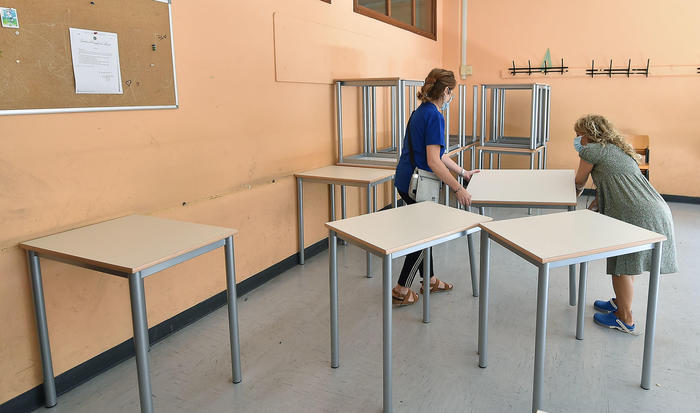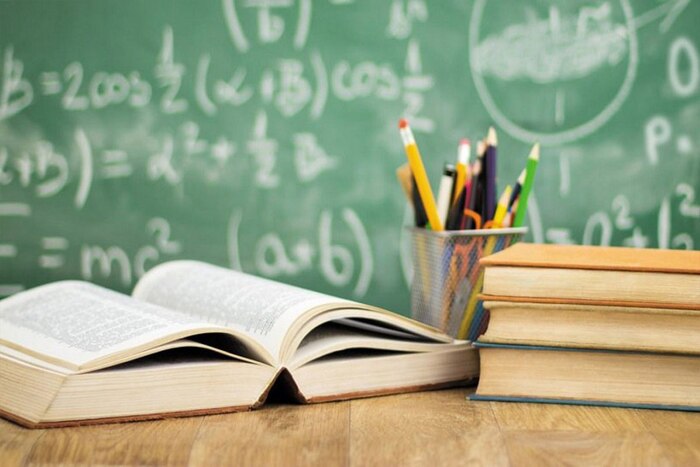It is no longer the school it used to be.
This is the almost unanimous impression of the students after the first week of lessons.
To trace a partial balance of the return to school in the post lockdown are the 3 thousand middle and high school pupils - among those who started on September 14 - intercepted by a survey by Skuola.net.
95% of them, in fact, say they have found a series of new prohibitions and unpublished rules, linked in some way to Covid.
Classrooms, in particular, seem to have turned into surgical rooms.
In 9 out of 10 cases, for example, students were prohibited from practicing the daily 'mutual aid' that has always distinguished them: no shared books or pens, pencils, erasers and lent sheets.
As well as, once the day was over, in more than 8 cases out of 10 children were prevented from leaving their belongings under the counter: all personal effects must be taken home.
About 1 in 4 even claims that the school has also given precise indications on where and how to place the backpacks: for example, they must never be placed on the ground.
Strict rules, in most cases, also on the disposition of the students: 3 out of 4 have a fixed place (chosen or assigned) and can no longer change it.
Speaking of desks, what do classrooms look like?
It seems that the extreme situations of complete absence of desks are not as widespread as it appears on social networks: only 5% of students found a place on a traditional chair and the same number on the “more equipped” version with the optional flap.
Traditional single benches dominate (in 67% of cases), followed by two-seater benches with a modified arrangement to ensure spacing (in 12% of cases) or by a mix of both solutions (in 9% of cases).
At the moment, innovative counters are almost a rarity, seen by 1% of the interviewees.
Without forgetting the 17% who saw their class dismembered due to limited spaces.
But the substantial revisions of the regulations have saved little or nothing of the school day.
More than 7 out of 10 pupils, again to keep the distance, are obliged to do recess at the desk.
Where there are vending machines, more than 1 in 2 are inaccessible.
You also limit the use of the bathroom: for 84% of the students the rules have changed;
the most frequent ones involve entry one at a time or a maximum number of times in which you can ask to leave the classroom (it being understood that you have to go there only in case of real need).
At the moment, however, the greatest criticalities seem to be more outside than inside schools: in fact, 77% of students admit to having noticed zero distances between pupils at the gates upon entering.
Despite 3 out of 4 students confirm the introduction of entrance shifts: for half of them the difference compared to the past is minimal (shortly before or after) but for 53% the clock has been moved - forward or backward - of several minutes.
Which could create logistical problems for children and their families.
Let's take those who use public transport: in 1 case out of 3 is forced to arrive very early due to limited journeys, which do not coincide with school rhythms.
In the sample examined, then, about half of families with children must accompany at least two to school, very often (40%) with different entry times from each other;
imposing a redefinition of the daily agenda or long waits at the entrance.
Finally, as anticipated, anti-Covid provisions seem to work a little better within schools.
For example, the sanitizing gel has a coverage close to 100%: it is available to 96% of the students interviewed and for 8 out of 10 it is present not only in the common areas but also in the classroom.
On other aspects, such as masks, however, there is still work to be done: 56% had to bring it from home;
moreover, 28% said that they currently have to wear it all day, even during lessons (excessive attention from the school or lack of space?)
The theme of masks, among other things, appears among the thorniest and most difficult aspects to control since in 1 case out of 3, to avoid "distractions" by the boys, "punishments" were decided for those who do not wear them when it should.













